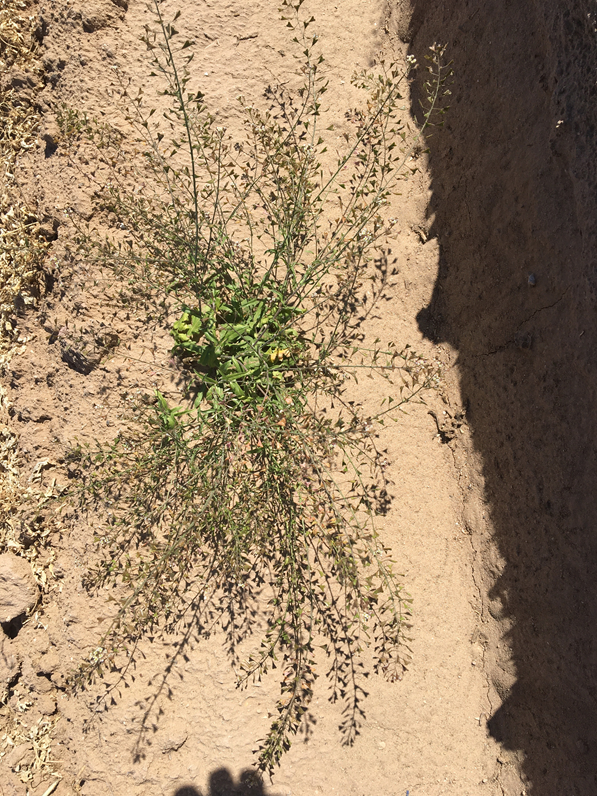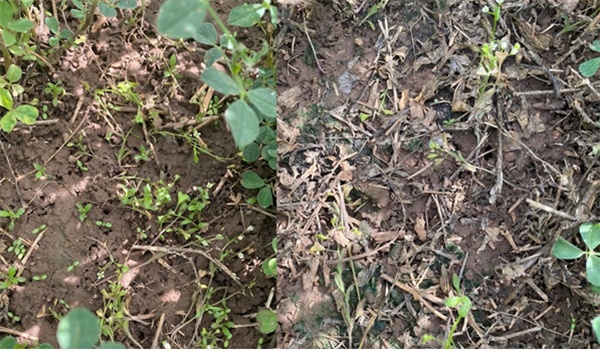



I am seeking samples of downy mildew on lettuce from around Yuma County to support the Michelmore Lab and their ongoing efforts to help characterize the downy mildew populations of the United States. The Michelmore Lab has led the charge on a survey of Bremia variants since 1980 and has been instrumental in demystifying the gene-for-gene nature of lettuce resistance to downy mildew.
Their group invites growers across the United States to submit downy mildew infected plant samples, which are then used to culture the Bremia on live host plants. The team then inoculates a panel of lettuce varieties carrying known resistance genes to determine the race of each isolate they receive. Identifying which races occur in which specific fields is essential to guiding the breeding of new resistant cultivars and maximizing the effectiveness of host-based genetic disease management. The data obtained from these tests are also used to designate new Bremia races through the International Bremia Evaluation Board.
Your contribution will help breed better lettuce for Yuma. This means less breakdown of resistance in the field, and better yields for Yuma growers. To facilitate these submissions the Yuma Plant Health Clinic will be setting up a separate drop-off point and submission sheet for downy mildew sample submissions in the same hallway we use for standard plant diagnostic submissions. The drop-off point will be clearly labelled and consist of a chest-style refrigerator and printed copies of the submission form. It is vital to keep these samples cool so they remain viable for future inoculations, so please place your samples inside of the refrigerator before you leave.
Shipping will be handled by the clinic. All we ask is that you fill out the submission form as completely as you can. An example of the questions that are asked in that form so you can prepare ahead of time can be found HERE .Shallowing steaming soil for weed control in spinach and baby leaf lettuce crops – machine in action and trial results (>89% weed control) video. Watch it here!
Fig. 1. Steam applicator principally comprising a 63 BHP steam generator
mounted on a bed-shaper applicator sled for killing weed seed prior to planting.
Steam applicator injects steam as beds are formed.After cooling (< ½ a day), the
crop is planted into the disinfested soil.
We have seen abundant Shepherdspurse recently in Yuma, AZ. Most of us are familiar with this winter annual broadleaf weed but we are adding a brief description:
Scientific name: Capsella bursa – pastoris
Season: Winter Annual
Habitat: Present in all crops and ditch banks, home gardens.
Cotyledons: Oval with a short petiole.
Leaves: First true leaves with hairs and spoon shape. Can have different shapes and form a rosette soon after emergence.
Young plants: Are mostly basal rosettes.
Mature plants: grow up to 20” with flower stems with sparse small leaves.
Flowers and Fruit: Flowers are pale pink and fruits are heart shaped or triangular seed pods.
Shepherdspurse is from the mustard or crucifer family, which includes many crops grown here such as broccoli, cauliflower, kale, kohlrabi, mustard greens and others.
In our production practices we commonly select some weed species that survive our methods of control. This weed has been around for a long time and has become increasingly widespread in recent years. The similarities with brassica crops add to the difficulty to control the weed as well as plant characteristics and growth habits.
In vegetables, Kerb can control shepardspurse when the product placed in the seed germination area close to the surface. If the product leaches the efficacy decreases. Dacthal, Prefar, Prowl, and Balan are less effective on this weed1.
Shepherspurse has proliferated in alfalfa recently and we are conducting some trials for its control. The results will be shared with PCAs and posted in our website when we finish collecting the data.


Fig 1. Images of an untreated plot compared to Raptor + Pursuit + Butyrac 200 +
NIS in alfalfa 4DAT.
Reference:
1.https://ag.arizona.edu/crops/vegetables/advisories/more/weed31.html
2.https://ipm.ucanr.edu/PMG/WEEDS/shepherdspurse.html#:~:text=Mature%20plant&text=Leaves%20vary%20in%20shape%20and,reduced%20in%20size%2C%20and%20stalkless.